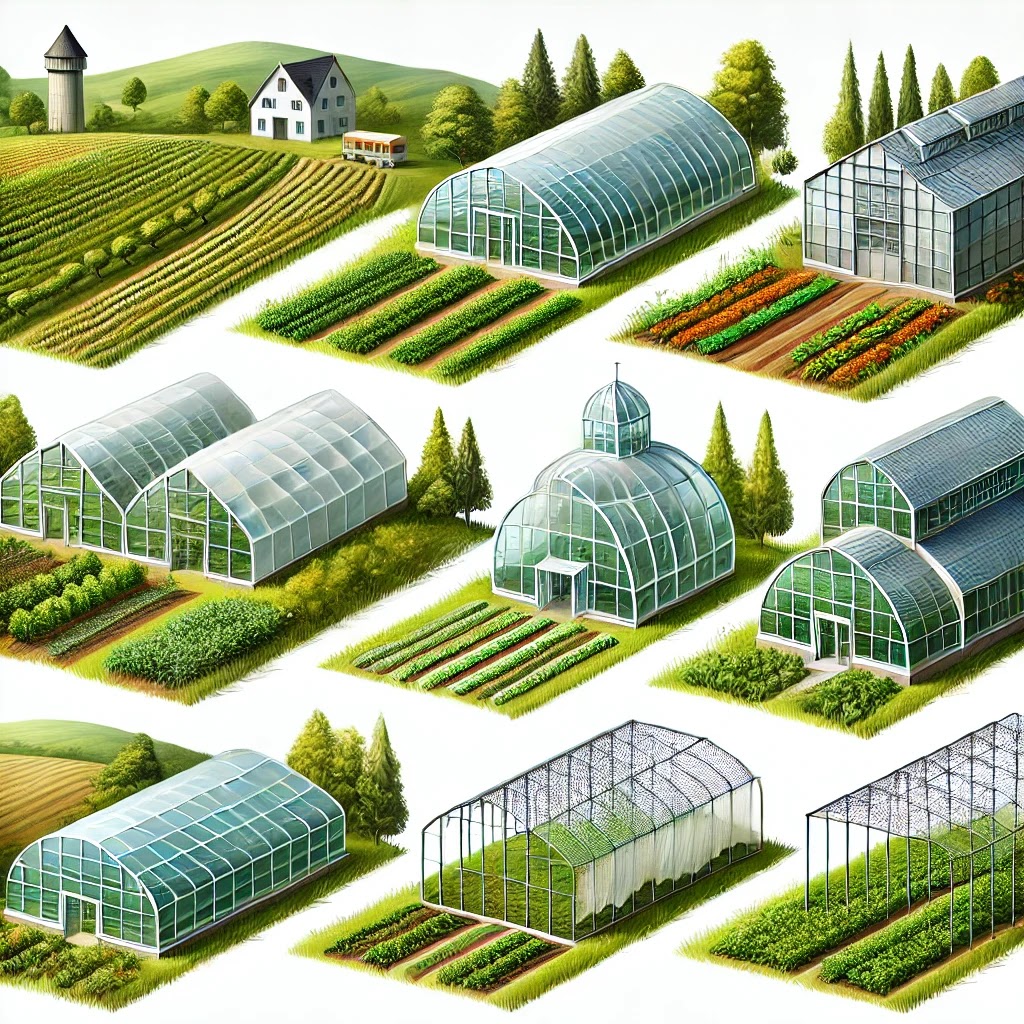Introduction
Greenhouse farming is a modern agricultural technique that allows farmers to grow crops in a controlled environment, reducing dependency on external weather conditions. With the increasing demand for high-yield, quality crops, greenhouse farming in India has gained popularity. It enables year-round cultivation, improves productivity, and ensures sustainability.
What is Greenhouse Farming?
Greenhouse farming is a method of growing plants inside a structured enclosure made of transparent materials such as glass or polyfilm. This enclosed environment provides an ideal microclimate, protecting crops from extreme weather conditions, pests, and diseases.
Types of Greenhouses
There are different types of greenhouses, each designed for specific agricultural needs and climatic conditions. Some of the common types include:
1. Ridge and Furrow Type Greenhouse
This greenhouse structure consists of multiple ridges and furrows, allowing for better water drainage and natural ventilation. It is commonly used in areas with high rainfall and provides an efficient way to grow crops under controlled conditions.
2. Even-Span Greenhouse
An even-span greenhouse has equal roof slopes, providing better sunlight distribution for crops. It is widely used for commercial greenhouse farming.
3. Uneven-Span Greenhouse
This type of greenhouse is designed for hilly areas, with uneven roof slopes to maximize sunlight capture and optimize plant growth.
4. Polyhouse Farming
Polyhouse farming is a specialized form of greenhouse farming where polyethylene sheets cover the structure. It offers protection against adverse weather conditions, allowing for enhanced crop production. Polyhouse farming in India is widely practiced due to its affordability and efficiency.
Types of Polyhouse Structures
Different types of polyhouses are used in agriculture, depending on climate, budget, and crop requirements. The common types include:
- Naturally Ventilated Polyhouse – Uses natural airflow for temperature regulation.
- Fan and Pad Cooled Polyhouse – Uses artificial cooling methods to maintain ideal growing conditions.
- Shade Net Polyhouse – Provides filtered sunlight, reducing heat stress on plants.
Benefits of Greenhouse Farming
Greenhouse farming in India offers several advantages over traditional farming methods. Some of the key benefits include:
1. Year-Round Cultivation
Greenhouse farming allows farmers to grow crops throughout the year, regardless of external weather conditions. This ensures a continuous supply of fresh produce.
2. Higher Crop Yield
By providing optimal growing conditions, greenhouse farming significantly increases crop yields compared to open-field farming.
3. Efficient Water Usage
Greenhouse farming uses advanced irrigation techniques such as drip irrigation, reducing water wastage and ensuring efficient resource utilization.
4. Protection from Pests and Diseases
The enclosed structure of a greenhouse acts as a barrier against harmful pests and diseases, reducing the need for chemical pesticides.
5. Better Quality Produce
Crops grown in greenhouses are of higher quality, as they are protected from external pollutants and adverse weather conditions.
Greenhouse Farming in India: A Growing Trend
With the increasing demand for food security and sustainable agriculture, greenhouse farming in India has witnessed significant growth. Farmers are adopting greenhouse and polyhouse farming to improve productivity and ensure better income generation.
Government Initiatives for Greenhouse Farming
The Indian government has introduced various schemes and subsidies to promote greenhouse farming. Programs such as the National Horticulture Mission (NHM) and Rashtriya Krishi Vikas Yojana (RKVY) provide financial assistance to farmers for greenhouse setup.
Popular Crops Grown in Greenhouses in India
- Tomatoes
- Cucumbers
- Capsicums
- Strawberries
- Exotic flowers (roses, lilies, orchids)
Challenges in Greenhouse Farming
While greenhouse farming offers several benefits, it also presents some challenges, including:
- High Initial Investment – Setting up a greenhouse requires significant capital investment.
- Technical Knowledge Required – Farmers need training to manage greenhouse systems effectively.
- Maintenance Costs – Regular maintenance of greenhouse structures and equipment is necessary for optimal performance.
Future of Greenhouse and Polyhouse Farming in India
With advancements in technology and increasing awareness, the future of greenhouse farming in India looks promising. Smart farming techniques, such as automated irrigation systems and climate control, are expected to further enhance greenhouse productivity.
Conclusion
Greenhouse farming in India is transforming agriculture by providing a sustainable and efficient way to cultivate crops. With its numerous benefits, including higher yields, resource efficiency, and protection from environmental factors, the greenhouse has become a game-changer for Indian farmers. As technology evolves and more farmers adopt this method, greenhouse and polyhouse farming will play a crucial role in shaping the future of Indian agriculture.


Comments
Post a Comment